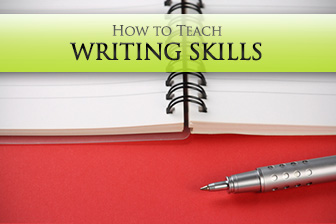How to Teach Writing Skills: 6 Best Practices


And although spelling, grammar, and punctuation are important, they should not take the forefront of a writing class—good spelling, grammar, and punctuation will not help you if you have nothing to say, and ultimately these are tools for good writing; they are not good writing in and of themselves.
Students also approach academic reading classes with similar attitudes: it is far removed from their own lives and it is incomprehensible, full of language and references they don’t understand and can’t relate to.
So, beyond telling students, “You need this course to graduate,” how can the teacher motivate reluctant academic readers and writers?

Many students in developmental reading and writing are not “sold” on the importance of academic reading and writing, seeing it as of little value outside of school. Therefore, it becomes the job of the instructor to sell them on the importance and on what strong reading and writing skills will do for students. For example, some direct connections are made in the research between an academic vocabulary base—derived from strong reading and writing skills—and academic success, career advancement, economic security, and ultimately quality of life. When students hear these statistics, many—not necessarily all—begin to pay attention.
Again, many students dread academic reading and writing as they associate it with endless haggling over comma placement and fill-in-the-blank exercises. By drawing back and demonstrating through discussion, brainstorm activities, peer review, and other group exercises that academic reading and writing are first and foremost the communication of ideas—from the funny and trivial to the serious and profound—students begin to go from “turned off” to “turned on.” The discussion of spelling and punctuation can take place in later drafts.
Students walk into their first day of a developmental reading and writing course designed to bring them up to college level often looking lost. This was probably the way I looked my first day of karate class—feeling out of their element, with no idea of how to proceed or what is expected. Instructors should recognize and be sensitive to these behaviors, recognizing that some time each session— for perhaps most of the term—will be spent on teaching students how to function in an academic environment. Students often need to learn how to enter and exit the class without disrupting, how to function in groups, how to participate in class discussion politely, and so forth. Investing some time perhaps each class session modeling and directly teaching these skills is a good investment of time for the future of the class and the students’ future educations.
Another important element of a successful reading and writing class is that students feel free to share ideas without fear of being ridiculed or censured. A class with this kind of safe feeling is called a learning community, where everyone, including the teacher, feels safe to both teach and learn. For example, I won’t forget the pride I felt when I overheard two students in a peer review session of their essays, and one of the students, a young woman who had come into the class the most hesitant and resistant, was telling her peer with confidence, “You’ve got great development here, but oh, Dude, you’ve got to work on your transitions.” And the young man she was working with nodded seriously, without taking offense, and then went back to work on his essay. This is the sign of a true learning community—students who feel free to communicate with each other, remain respectful, and help each other.
Another method to get students excited and motivated to write is to showcase their work. Writing, again, is ultimately an act of communication with another. I speak as probably the world’s most failed diary-keeper: I have attempted since childhood to keep a diary and each time quit, either forgetting about it or eventually seeing it as futile. Why bother if no one is reading it? I can only talk to myself for so long. This is how many students feel about writing: why bother if it’s only for a grade and an instructor who is only reading because it’s her job? (The students’ probable viewpoint, not my own). But if students are given a sense of audience, then the purpose becomes clearer. This sense of audience can be created in numerous ways: in my own freshman year of college, for example, I used to feel a real sense of pride and validation when the instructor read bits of my writing aloud to the class as examples (not including my name, of course). Working in peer groups, and sharing one’s essays and ideas, also creates a sense of audience. When writing something today, for example, I envision what my own writing group’s response would be, and this eliminates some false or unclear places in the writing.
But through such measures as demonstrating the value of academic reading and writing, focusing on the global, and creating a community, reluctant readers and writers can be turned into “turned on” readers and writers.
What are some ways you turn students on to academic reading and writing?